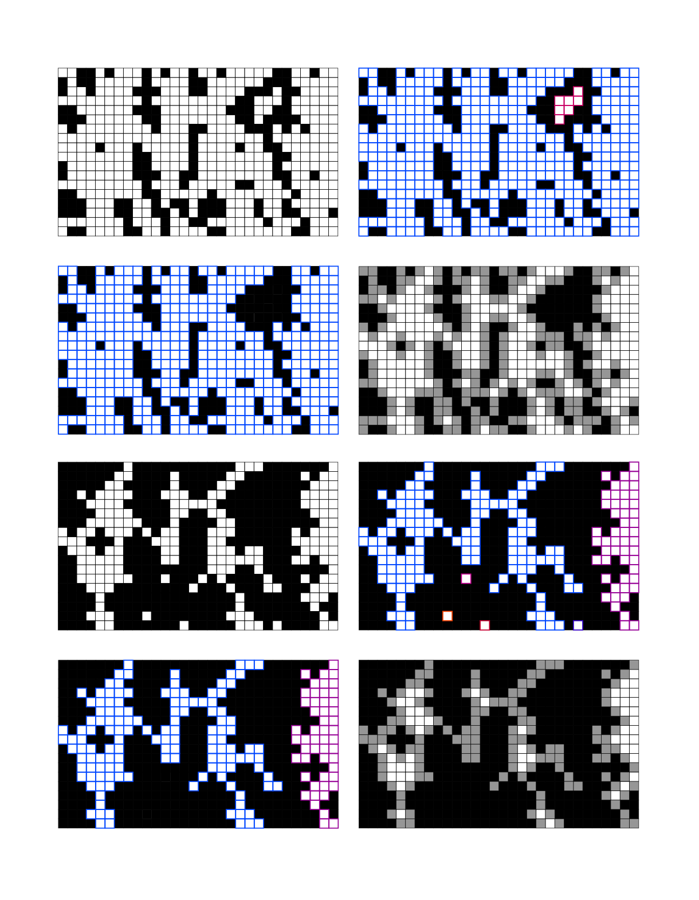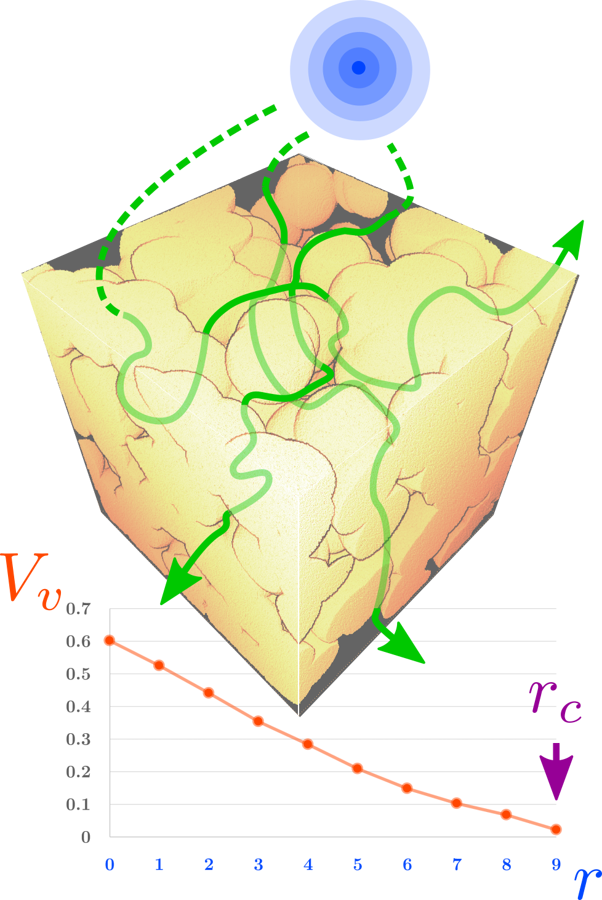A-protocol (3D); Point percolation
Specifications:
A-protocol framework based on a dynamical vision of accessibility, i.e., accessibility according to the particle's size
Enhancing any numerical descriptor by hindrance consideration
New vision of percolation: point percolation (Stochastic, i.e., random sampling, or Deterministic, i.e., imposed set) handling any complex microstructures
Point accessibility mixing constrictivity and stochastic point percolation
Resulting on a final critical radius, used in a novel definition of constrictivity factor
The steps defining the A-protocol;
connected components labeling (A-1), percolation assessment (A-2),
estimates and descriptors computation (A-3, not represented below), and
morphological erosion (A-4), are applied iteratively to the microstructure. The
iterative erosions using a unit sphere as structuring element, allow to consider a large
interval of radii, representing the size of the hypothetic percolating particle (imposed radii can be used).
They
are illustrated on a synthetic microstructure below, where (A-0)
represents the microstructure at the beginning of an iteration.
Inputs:

- binary microstructure
- optional:
microstructure
skeleton
Outputs:
- volume fraction,
number of connected components (CC) and percolating CC, number, volume and volume fraction of cavities
values as a function of the radius
(*.txt file)
- critical radius value (*.txt file)
- Euler number values as a function of the radius (*.txt file)
- optional: coordinates of each point
(*.txt file)
Parameters:
- type of sampling (Uniform, Stratified, Imposed) to defined the starting points set. Two scenarios:
- number of random points N
- '...': selection of the file containing the points coordinates; two options:
- *.txt file
- *.fda (image) file ('Expert' mode). If it is the case, check 'Image', giving access to two optional parameters, useful when particles (objects bigger than 1 voxel) are considered,
- 'Center of Mass': computation of the center of mass of each object
-
'Orth. Projection': orthogonal projection of each point on the
microstructure
- 'Skeleton' mode): has to be checked if the current data is the microstructure skeleton. Additional parameter,
- "...": selection of the microstructure
- 'Coordinates' ('Expert' mode) : coordinates of each point used (point percolation) are saved in the *.txt file
- 'Radii' ('Expert' mode) : to impose your own radii of the percolating particles. Additional parameter,
-
"...": selection of the *.txt file containing the radii; one line, one radius (the radius equal to zero is considered by default)